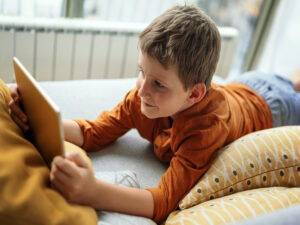Many speech-language pathologists use both verbal language and sign language in therapy sessions to facilitate communication with children. Sign language can serve as a bridge for children who are unable to effectively communicate their wants or needs and express themselves.
Pairing sign language with verbal language in therapy sessions or at home has many positive effects on a child’s development. Sign language gives children another way to communicate, and teaches them about the power of communication. Before using spoken words, sign language allows young children to communicate with others and express themselves. It allows children to request, protest, comment, and communicate their wants and needs. As signing capabilities increase, frustration levels can decrease, as children will be able to communicate messages more effectively and efficiently. When using sign language with a child, it is important to:
· Model
· Pair signs with the verbal label of the word
· Use a lot of repetition
It is also important to introduce a child to a variety of words, including nouns, social words, and actions. Here is a list of suggested first words to sign:
· Want, go
· Eat, drink
· Sit, open, help
· Yes, no
· More, stop, all done
· Bed, potty/bathroom
· Mom, dad, boy, girl


